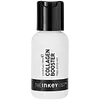What's inside
What's inside
 Key Ingredients
Key Ingredients

 Benefits
Benefits

 Concerns
Concerns

No concerns
 Ingredients Side-by-side
Ingredients Side-by-side

Water
Skin ConditioningGlycerin
HumectantButylene Glycol
HumectantPropanediol
SolventPhenoxyethanol
PreservativeHydroxyethylcellulose
Emulsion StabilisingDisodium EDTA
Leuconostoc/Radish Root Ferment Filtrate
AntimicrobialCarbomer
Emulsion StabilisingHyaluronic Acid
HumectantPalmitoyl Dipeptide-5 Diaminobutyroyl Hydroxythreonine
Skin ConditioningPalmitoyl Dipeptide-5 Diaminohydroxybutyrate
Skin ConditioningPolysorbate 20
EmulsifyingPalmitoyl Tetrapeptide-7
Skin ConditioningPalmitoyl Tripeptide-1
Skin ConditioningWater, Glycerin, Butylene Glycol, Propanediol, Phenoxyethanol, Hydroxyethylcellulose, Disodium EDTA, Leuconostoc/Radish Root Ferment Filtrate, Carbomer, Hyaluronic Acid, Palmitoyl Dipeptide-5 Diaminobutyroyl Hydroxythreonine, Palmitoyl Dipeptide-5 Diaminohydroxybutyrate, Polysorbate 20, Palmitoyl Tetrapeptide-7, Palmitoyl Tripeptide-1
Water
Skin ConditioningGlycerin
HumectantButylene Glycol
HumectantXanthan Gum
EmulsifyingPhenoxyethanol
PreservativeCarbomer
Emulsion StabilisingMethylparaben
PreservativeFucus Vesiculosus Extract
EmollientSodium Hyaluronate
HumectantPEG-40 Hydrogenated Castor Oil
EmulsifyingEthylhexylglycerin
Skin ConditioningChlorphenesin
AntimicrobialSodium Hydroxide
BufferingHexylene Glycol
EmulsifyingDisodium EDTA
Caprylyl Glycol
EmollientTocopheryl Acetate
AntioxidantAcacia Seyal Gum Extract
HumectantCitric Acid
BufferingDenatonium Benzoate
MaskingPotassium Sorbate
PreservativeWater, Glycerin, Butylene Glycol, Xanthan Gum, Phenoxyethanol, Carbomer, Methylparaben, Fucus Vesiculosus Extract, Sodium Hyaluronate, PEG-40 Hydrogenated Castor Oil, Ethylhexylglycerin, Chlorphenesin, Sodium Hydroxide, Hexylene Glycol, Disodium EDTA, Caprylyl Glycol, Tocopheryl Acetate, Acacia Seyal Gum Extract, Citric Acid, Denatonium Benzoate, Potassium Sorbate
 Reviews
Reviews

Ingredients Explained
These ingredients are found in both products.
Ingredients higher up in an ingredient list are typically present in a larger amount.
Butylene Glycol (or BG) is used within cosmetic products for a few different reasons:
Overall, Butylene Glycol is a safe and well-rounded ingredient that works well with other ingredients.
Though this ingredient works well with most skin types, some people with sensitive skin may experience a reaction such as allergic rashes, closed comedones, or itchiness.
Learn more about Butylene GlycolCarbomer is a polymer of acrylic acid. Its main role is to create a gel consistency.
A high amount of carbomer can cause pilling or balling up of products. Don't worry, most products contain 1% or less of carbomer.
Disodium EDTA plays a role in making products more stable by aiding other preservatives.
It is a chelating agent, meaning it neutralizes metal ions that may be found in a product.
Disodium EDTA is a salt of edetic acid and is found to be safe in cosmetic ingredients.
Learn more about Disodium EDTAGlycerin is already naturally found in your skin. It helps moisturize and protect your skin.
A study from 2016 found glycerin to be more effective as a humectant than AHAs and hyaluronic acid.
As a humectant, it helps the skin stay hydrated by pulling moisture to your skin. The low molecular weight of glycerin allows it to pull moisture into the deeper layers of your skin.
Hydrated skin improves your skin barrier; Your skin barrier helps protect against irritants and bacteria.
Glycerin has also been found to have antimicrobial and antiviral properties. Due to these properties, glycerin is often used in wound and burn treatments.
In cosmetics, glycerin is usually derived from plants such as soybean or palm. However, it can also be sourced from animals, such as tallow or animal fat.
This ingredient is organic, colorless, odorless, and non-toxic.
Glycerin is the name for this ingredient in American English. British English uses Glycerol/Glycerine.
Learn more about GlycerinPhenoxyethanol is a preservative that has germicide, antimicrobial, and aromatic properties. Studies show that phenoxyethanol can prevent microbial growth. By itself, it has a scent that is similar to that of a rose.
It's often used in formulations along with Caprylyl Glycol to preserve the shelf life of products.
Water. It's the most common cosmetic ingredient of all. You'll usually see it at the top of ingredient lists, meaning that it makes up the largest part of the product.
So why is it so popular? Water most often acts as a solvent - this means that it helps dissolve other ingredients into the formulation.
You'll also recognize water as that liquid we all need to stay alive. If you see this, drink a glass of water. Stay hydrated!
Learn more about Water